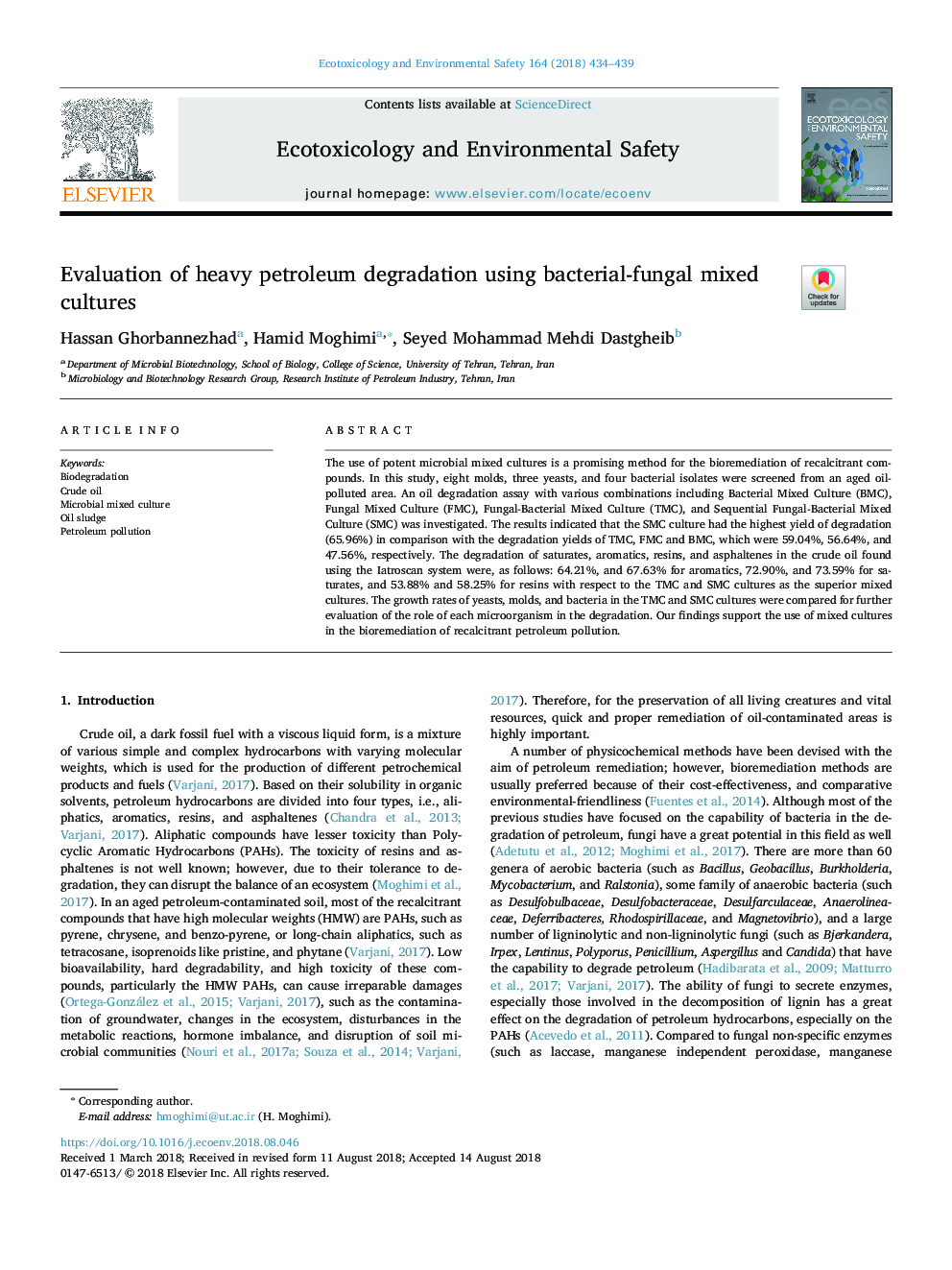| Article ID | Journal | Published Year | Pages | File Type |
|---|---|---|---|---|
| 8853177 | Ecotoxicology and Environmental Safety | 2018 | 6 Pages |
Abstract
The use of potent microbial mixed cultures is a promising method for the bioremediation of recalcitrant compounds. In this study, eight molds, three yeasts, and four bacterial isolates were screened from an aged oil-polluted area. An oil degradation assay with various combinations including Bacterial Mixed Culture (BMC), Fungal Mixed Culture (FMC), Fungal-Bacterial Mixed Culture (TMC), and Sequential Fungal-Bacterial Mixed Culture (SMC) was investigated. The results indicated that the SMC culture had the highest yield of degradation (65.96%) in comparison with the degradation yields of TMC, FMC and BMC, which were 59.04%, 56.64%, and 47.56%, respectively. The degradation of saturates, aromatics, resins, and asphaltenes in the crude oil found using the Iatroscan system were, as follows: 64.21%, and 67.63% for aromatics, 72.90%, and 73.59% for saturates, and 53.88% and 58.25% for resins with respect to the TMC and SMC cultures as the superior mixed cultures. The growth rates of yeasts, molds, and bacteria in the TMC and SMC cultures were compared for further evaluation of the role of each microorganism in the degradation. Our findings support the use of mixed cultures in the bioremediation of recalcitrant petroleum pollution.
Related Topics
Life Sciences
Environmental Science
Environmental Chemistry
Authors
Hassan Ghorbannezhad, Hamid Moghimi, Seyed Mohammad Mehdi Dastgheib,
